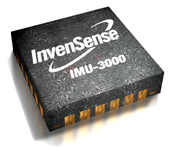In search of a new project I decided I want to build a kite which I can fly using my computer. For this I need a couple of things: a kite, an electro motor to steer the kite, and also a way for the computer to see where the kite is located in the sky at any given moment.
This last thing is what I wonder about. It means I need a sensor on the kite which can register "where" the kite is at any given moment. "Where" is defined here as a 2 dimensional context (I keep the rope length constant). The location should not be seen from the sky, but from the base of the kite its rope (i.e. the person flying it), which rules out GPS. It means I need something like a kinect sensor, but it should be able to register the object (kite) at a distance of up to a 100 meters or so. If needed I can of course attach a small "following device" to the kite.
I searched around a bit and I find technologies like Infra Red, Ultrasound, RFID. Does anybody know what kind of technology I need to use to be able to track a fast moving object in the sky in real time? There is of course a line of sight, so IR or Ultrasound could be possible, but then there is also a rope in the air (the one attached to the kite), which might confuse things.
So does anybody have any experience or thoughts about this? All tips are more than welcome!
Please note: it's a home pet project, so buying industry grade equipment is out of the question. It should be reasonably simple (consumer) hardware. If it can be taken from old home appliances that would be even better.. :)
[EDIT] In the meantime, i've found the OpenCV software (Open source computer vision), with which you can follow differently coloured blobs (a kite). Furthermore, it has python bindings (my favorite programming language). So this would already be a very cheap option (just need a webcam). It would create a problem with cloudy weather though, so if there is an option with a little device I can attach to the kite and which can follow the kite through the clouds, that would be a better option..





